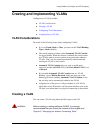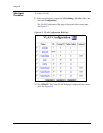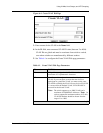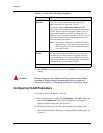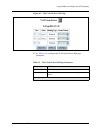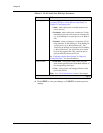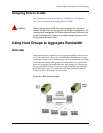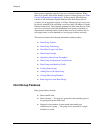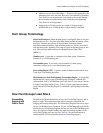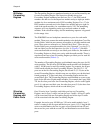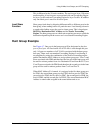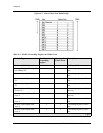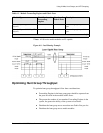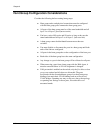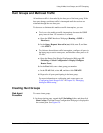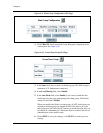
Document No. 10-300077, Issue 2 6-15
Using VLANs, Hunt Groups, and VTP Snooping
■ Quicker recovery from link failure — If a port in the group fails, the
remaining ports carry the load. Recovery is not limited by Spanning
Tree Protocol convergence time (convergence time is the time the
network takes to resume steady-state forwarding after Spanning
Tree Protocol reconfiguration).
■ Supports up to 25 hunt groups per switch, if 48-port mode is
disabled and up to 13 hunt groups if 48-port mode is enabled.
Hunt Group Terminology
Base Port/Flood port- When the hunt group is configured, there is one port
designated base port. All ports in the hunt group assume the identity of the
base port. The base port passes all flood frames, broadcast frames,
destination unknown unicast, and multicast frames for VLANs associated
with the hunt group. Spanning Tree treats all ports in the hunt group as one
port. The base port sends and receives Bridge Protocol Data Units
(BPDU’s).
Member port - A port that is a member of the hunt group. Sometimes
referred to as a “Participating port”.
Non-member port - A port that is not a member of a hunt group.
sometimes referred to as a “non-Participating port”.
Forwarding Engine (FE) - A generic name for hardware that makes layer
2 and layer 3 forwarding decisions.
Participating (or Non-Participating) Forwarding Engine - A forwarding
engine that has a port is part of the hunt group. Example, a M8024 (80-
series module with 24 10/100 Mbps ports), the first 12 ports are serviced by
a single Forwarding Engine. If any of those 12 ports participates in a hunt
group, then that Forwarding Engine is considered a participating forwarding
engine.
How Hunt Groups Load Share
Forwarding
Engines and
Fabric Ports
Each 80-series Media module has at least two Forwarding Engines, and as
many as eight. These engines are the major hardware components for
bridging and routing data traffic. The Forwarding Engines can service up to
twelve 10/100 Mbps ports. Example, 24-port 10/100 Mbps 80-series media
module has two Forwarding Engines that service twelve 10/100 Mbps ports
each. An eight-port Gigabit module has eight forwarding engines one for
each of the Gigabit ports per slot. See Table 6-3 for the relationship of
media modules (50-series and 80-series) to Forwarding Engines.



